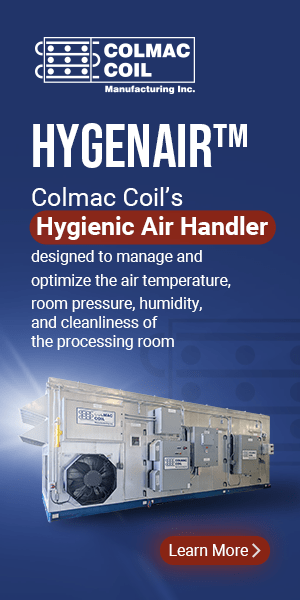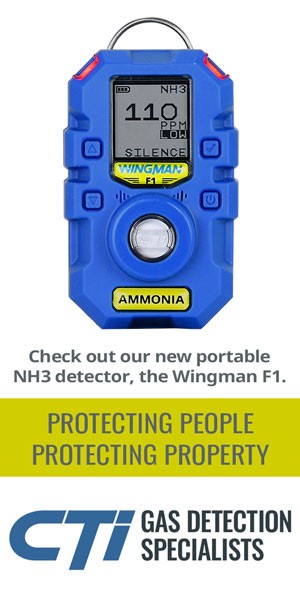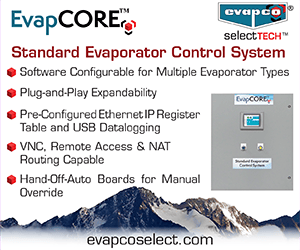Always Learning
Kem Russell, P.E
The following are some examples of being willing to learn versus not being willing to try to learn.

At a large (+2000 TR) low-temperature ammonia facility the processing of the product occurred over a short period, so it was extremely important that the system operated very well. The low-side of the system operated in a vacuum. Changes had been made to the high-side of the system to take advantage of discharge gas heat, which seemed to coincide with an unwanted increase in condensing pressure and an also unwanted increase in power usage. Some efforts had been spent to find the problem, but nothing changed until one person decided they were going to find out what was going on.
The system had an automatic purger that cycled through all purge points. Checking, they found the purger was operating correctly. What about the purge solenoid assemblies? Checking they found that all of the purge solenoids worked. They also checked the manual/automatic stem on each of the assembly solenoids and all were in the automatic position except one. What was the possible effect of this solenoid being manually opened? They didn’t know, so they asked. The answer was that only one purge point should be purged at a time. Having two (or more) purging simultaneously may result in non-condensables flowing from one purge point to another due to even a small difference in pressure between the purge points. The end result could be that no actual purging gets done.
This person was willing to put in the effort to keep looking and ask questions which resulted in both better system performance and they learned a lot.
EXAMPLE 2:
Pressure relief valves are a very important device for every pressure vessel or piece of equipment requiring one. The function of a relief is affected by both the pressure loss to the inlet of the valve as well as the outlet or back-pressure on the valve. It is important to understand what a correct installation is so the relief valve can function as properly. At an ammonia refrigeration facility, the refrigeration operator knew that relief valves are to be changed at least every five years. Since the last time many of the relief valves had been changed, relief valves had become available with removable cartridges. The operator thought this was great since this could make changing relief valves in the future easier, faster, and safer. So, the operator ordered a lot of the cartridge-style relief valves. He knew the inlet and outlet sizes required and the set relief pressure. What he didn’t take time to understand and learn was would the new relief valves work with the pressure vessels and relief piping he had?
The relieving capacity of the new style relief valves installed was more than required for all but one vessel. The replacement on that vessel was the correct pressure setting and pipe connection size, but too small in relieving capacity. In addition, all of the other relief valves installed having more than the required relieving capacity meant that the existing relief discharge piping now had much more back-pressure than acceptable. By not making the effort to learn about proper relief valve application the refrigeration operator had to re-order and replace again, all of the relief valves. A tough learning lesson but one that the operator probably won’t forget.
EXAMPLE 3:
Many years ago, I worked for my dad’s refrigeration company in the conversion of a Liberty ship (about 440 feet long) to a seafood processor. Some of the ship didn’t need much conversion, just the addition of air-cooling units to store frozen products in the existing hold spaces. One of the higher decks was converted into the processing area, and I was given the task of removing a lot of unnecessary steel structure to make room for the many plate freezers that would be installed. Up to this time I had worked with not only my dad for many years but also people he hired as well as many of the people that operated ships and land-based facilities we did work for. Maybe I lived a somewhat sheltered life since the people I worked with were hardworking, very good at what they did, and mostly friendly. I had not yet learned that some people could be vastly different from what I was used to, and I would have to be willing to try really hard to learn how to get along with them. We had one man on the crew that not only tested me but others.
At the end of one workday, I had cleaned up my work area, properly coiled and secured the cutting hose and bottles, then asked my dad what else he wanted me to do. He told me to go help this other welder he had hired to clean up his area and welding gear.
I offered this man my help and he told me he didn’t need my help with a lot of descriptive words I was not used to nor wanted to hear, and that I should go back to my mother. I was shocked that someone would talk to me like that! How was I supposed to work with or help this guy?
My help being rejected in a very unpleasant manner I went back to the top deck where I found my dad talking with Tiny the Chief Engineer of the ship. Tiny was the only name I ever knew for the Chief but that was an oxymoron. Tiny was about 6’-6” tall, big, and strong. With Tiny listening, I told dad what had happened. In his deep voice, Tiny said “Don’t worry about it. That guy did the same thing to me, and I considered wrapping a 2” pipe around his head. I don’t know what that guy’s problem is, but he isn’t going to be working here long.”
Tiny was right. That guy wasn’t working there the next day, which I wasn’t too upset about, but I realized I did need to be willing to learn to work with and in a reasonable manner deal with all kinds of people. I don’t know what happened to that guy, but I hope he started being willing to learn how to appropriately interact with others and improve his life too. Learning is not a one-time thing, it is a lifelong thing. It’s like breathing, don’t let it stop. Be willing to continue to learn and keep trying. No matter how much you think you know you can always learn more.













